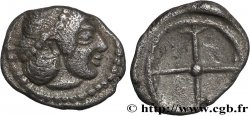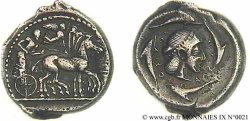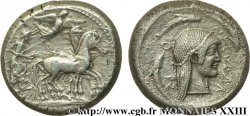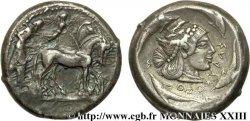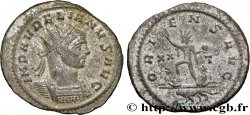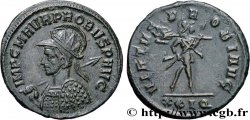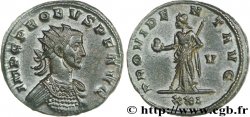- Accueil
- >
- >
v41_0061 - SICILY - SYRACUSE Tétradrachme
MONNAIES 41 (2009)
Starting price : 1 800.00 €
Estimate : 2 800.00 €
unsold lot
Starting price : 1 800.00 €
Estimate : 2 800.00 €
unsold lot
Type : Tétradrachme
Date: c. 485-480 AC.
Mint name / Town : Syracusa
Metal : silver
Diameter : 26,5 mm
Orientation dies : 3 h.
Weight : 17,03 g.
Rarity : R2
Emission: groupe 3, série 6a
Coments on the condition:
Exemplaire de qualité exceptionnelle pour ce type de style archaïsant, sur un flan large et ovale, parfaitement centré des deux côtés avec les grènetis visibles. Droit de toute beauté où rien ne manque avec un centrage idéal. Magnifique portrait d’Aréthuse au revers servi par une très belle patine de collection ancienne avec des reflets mordorés
Catalogue references :
Obverse
Obverse legend : ANÉPIGRAPHE.
Obverse description : Bige au pas à droite, conduit par un aurige tenant les rênes et le kentron ; le bige est couronné par Niké volant à droite.
Reverse
Reverse legend : LÉGENDE AVEC LE N RÉTROGRADE.
Reverse description : Tête d'Aréthuse à droite, les cheveux relevés et retenus par un diadème de perles, entourée de quatre dauphins.
Reverse legend : SU-RAK-O-SION
Reverse translation : (de Syracuse).
Commentary
Mêmes coins que l’exemplaire de l’American Numismatic Society (ANS. 62, pl.3). Seulement quatorze exemplaires étaient répertoriés par Erich Boehringer en 1929.
Same dies as the American Numismatic Society specimen (ANS. 62, pl. 3). Only fourteen specimens were listed by Erich Boehringer in 1929.
Same dies as the American Numismatic Society specimen (ANS. 62, pl. 3). Only fourteen specimens were listed by Erich Boehringer in 1929.








 Report a mistake
Report a mistake Print the page
Print the page Share my selection
Share my selection Ask a question
Ask a question Consign / sell
Consign / sell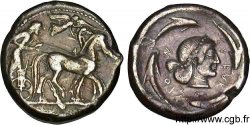
 Full data
Full data